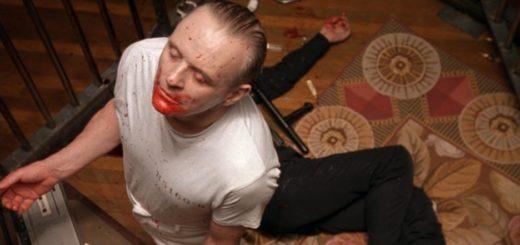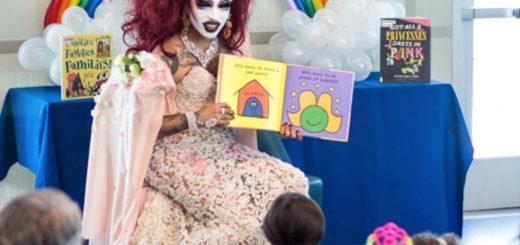US Foreign Policy Creates Disastrous Conditions For Child Prostitution to Flourish in Eastern Europe & Elsewhere
Child trafficking in eastern Europe: A trade in human misery
By Richard Tyler
25 October 2003
“No substantial study on the trafficking of children in Europe based on empirical research has yet emerged.”
“Since this is a clandestine activity, there is little hard statistical information… It is especially difficult to gather statistical information on children.”
—End child exploitation: Stop the traffic!, UNICEF report, July 2003
Each year, some 1.2 million children are trafficked worldwide, according to the United Nations. The Organisation for Security and Co-operation in Europe estimates that 200,000 individuals are trafficked annually from eastern Europe, a significant proportion being children. Some become unpaid domestic servants, or work in sweatshops, but many more—boys, girls, teenagers—are forced into prostitution and crime.
A Channel Four television documentary, “Cutting Edge: The Child Sex Trade,” screened recently in Britain, showed how the authorities largely ignore the trafficking of children from eastern Europe.
Romanian filmmaker Liviu Tipurita returned to Bucharest, where he met up with 15-year-old Laurentiu, who has lived on the streets for most of his life. Three years earlier, Tipurita had filmed the boy living in a cardboard box with only a sweatshirt to wear. Laurentiu and his friends have a precarious existence. Of the little money they earn, mainly from begging and selling sex, much is spent fuelling their addiction to sniffing glue.
The documentary exposed how Western pedophiles were coming to Romania posing as tourists, and were then procuring boys for underage sex. “Tom,” from Britain, had originally come to Bucharest in the aftermath of the collapse of the Ceausescu regime to work in an orphanage. Using hidden cameras, Tom was shown discussing his Internet business—a web site offering to introduce men to Romanian boys. His clients came from throughout western Europe—Britain, Holland, Switzerland. He boasted that he had even supplied boys to a German judge.
From Bucharest, Tipurita travelled to Milan. In one district of Italy’s most prosperous city, the film showed how Romanian boys, some as young as 10, were being pimped for underage sex, often by their own fathers, brothers and cousins.
Posing as a potential customer, and using a secret night-vision camera, Tipurita asked one young boy how much it would cost for one hour. He said he would have to ask his father. Thirty euros ($35), came the reply. Suddenly, a police car drove by, but they were only interested in looking for “illegal immigrants,” Tipurita commented.
International federation Terre des Hommes estimates that 6,000 children between the ages of 12 and 16 are trafficked from eastern Europe each year, with more than 650 being forced to work as sex slaves in Italy. The price of a girl trafficked to Italy can be between $2,500 and $4,000, with up to $10,000 being paid if she is a virgin. According to the French human rights organisation, Albania is the county most involved in the sex trade, with women and children being lured to go to the West with false promises of marriage, jobs or education. When they get there, there is no husband, no job and no education. Alone in a foreign land without any means of support, violence and coercion ensure they are soon earning money for their new “owners.”
A recent article in the Guardian newspaper reported the case of a retired Italian couple who had been arrested for buying a three-year-old Albanian boy, paying $6,000 to the trafficking gang that specialised in “underage merchandise.” The boy had allegedly been traded for a colour TV set by his father.
Detectives working on the case say they have identified 67 other Albanian children less than 14 years old trafficked into Italy by the same gang. One of the arrested gang members was a member of the Albanian intelligence service.
In a follow-up article, Guardian reporter Sophie Arie travelled to Albania to find the parents of the little boy. His mother, Fatimira, said that four years ago her husband had brought the Italian pensioner Angello Borelli to their home, a former pigsty. He said he wanted to adopt a child, and chose their son, Oracio.
“Of course I miss my child,” Fatimira told the journalist, “but we live like animals. I’m glad they took him. He has a chance to have better conditions in Italy.”
Italy is not the only destination for children and young people being trafficked. An article on the Terre des Hommes web site notes that 80 percent of the young women and girls brought to Germany by smuggling rings come from eastern Europe. It has also found an increase in the number of young boys being introduced into the sex market.
In 1998, Romanian gangs brought 250 children from Romania to Germany to be used as “Klaukinder,” or juvenile thieves.
The Greek government estimates that there are some 3,000 unaccompanied Albanian children in the country, with more coming during the summer months. In oral evidence about the trafficking of Albanian children to Greece, given to the Commission on Human Rights, Terre des Hommes representative Eylay Kadjar-Hamouda said, “A child earns a minimum of €30-€50 per day and gives all the money to his boss. A very small percentage is sent back to his family in Albania but in a very irregular way. Generally several children are exploited at the same time by a boss.”
“In the country of destination, Greece, the children are not considered as victims but as guilty of having illegally entered the country,” Kadjar-Hamouda noted. “Terre des Hommes is particularly concerned that some of the children placed in centres in Greece simply disappear.”
This concern is not limited to Greece ands points to the most sinister aspect of the trade in children.
“We notice that the number of children going missing in the east does not tally with the numbers we trace in Europe”, said Marina Rini of Terre des Hommes in Italy.
“We know that gangs offer children for sale dead or alive. We can only conclude that the missing children die or are killed for their organs.”
Thousands of eastern European children and teenagers are being reduced to commodities in a trade in human misery. They are bought and sold like chattels to satisfy perverted sexual appetites, to provide slave labour, or, worst of all, to be “harvested” for their organs and body parts so that the rich and their children can live at their expense.
UNICEF put the global value of human trafficking at over $12 billion a year, just $2 billion less than Albania’s gross domestic product.
The collapse of the Soviet Union and its Stalinist satellites throughout eastern Europe was hailed by the political elite in the West as heralding a new dawn of liberty, democracy and prosperity. The thousands of children trafficked from the former “Eastern Bloc” countries are testimony to the bitter reality of poverty and social brutalisation.
The global increase in poverty is most evident in eastern Europe, rising from 1 million to 24 million people between 1987 and 1998—defined as those forced to live on less than $2 a day. The percentage of the population below the poverty line is 30 percent in Albania and over 44 percent in Romania, according to the CIA World Factbook.
The introduction of the “free market” into the former state-controlled economies in eastern and central Europe has had its most devastating impact on family life. Millions of breadwinners have lost their jobs, Western imports have forced out domestic production leading to rising prices, and welfare provisions have been gutted.
According to Terre des Hommes, “Living conditions for the majority of the approximately 150 million children in the East European states and the Soviet Union have worsened since 1989.”
After decades of suppression under the brutal Stalinist regimes that existed in Bucharest and Tirana, the population has been plunged into “shock therapy”—the reintegration of these states into the global capitalist economy. The rule of Nicolai Ceausescu and Enver Hoxha has been replaced by the IMF and the World Bank, which have presided over restructuring (factory closures and mass layoffs), reforms (axing spending on education, health and pensions), and the encouragement of enterprise (the private acquisition of the few profitable state concerns at fire sale prices or through downright theft).
The process of European Union (EU) integration has meant efforts to transform the East into a reservoir of cheap labour and close to zero corporate taxation, while at the same time making the EU’s external borders even tighter—clamping down on so-called “illegal immigrants,” denying even basic welfare provisions to those that often make long and hazardous journeys to escape persecution or grinding poverty. To legitimise this policy, the universal scapegoating of asylum seekers and refugees by all the establishment parties turns victims into villains. Not least, led by the US, the West has waged war and fomented civil war across the Balkans, forcing hundreds of thousands into exile and creating conditions where human trafficking can flourish.
The governments of the European Union avert their gaze when it comes to trafficking children, despite having signed on to the Protocol to the Convention on the Rights of the Child on the Sale of Children, Child Trafficking and Child Pornography. A 2002 report by Europol, the European Law Enforcement Agency, on the trafficking of human beings into the EU, shows that most of the 15 member states keep no relevant statistics at all. Only four provide any concrete information, with the majority reporting that figures are “not available” or “not given.”













